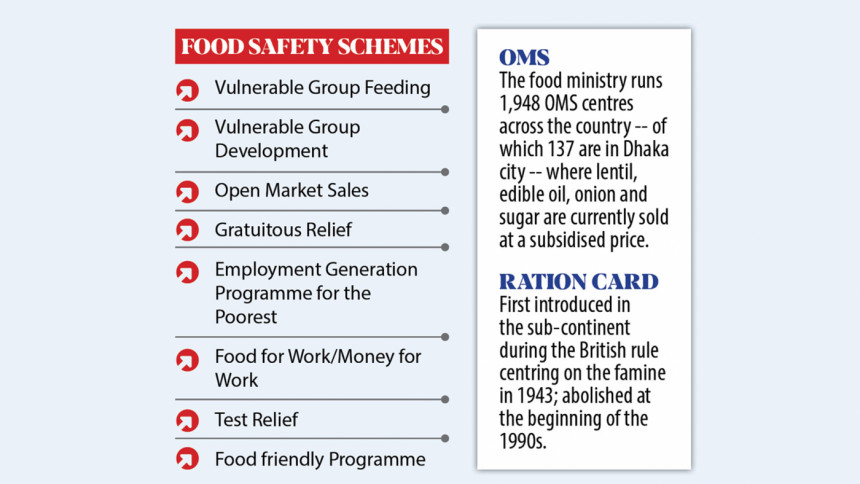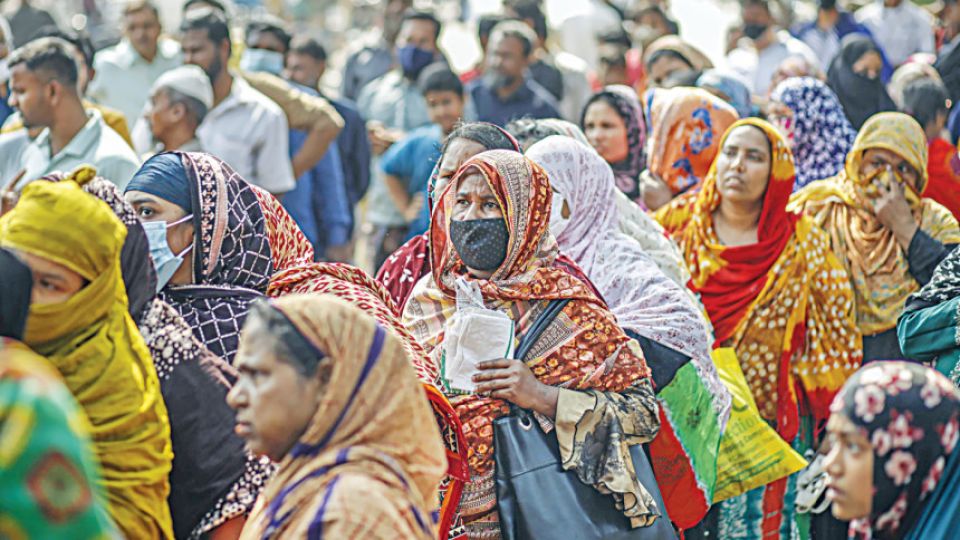March 18, 2022
DHAKA – The demand for the reintroduction of ration cards has been growing in recent times with the continued rise in the price of essentials.
The High Court on Tuesday, in response to a writ petition, ordered the government authorities concerned to distribute daily essentials — edible oil, onion, rice, wheat, sugar, and lentils — among the people through ration cards under the open market sale (OMS) policy.
But the OMS has proved to be too scanty to provide the support to the poor who often return empty-handed from long queues before OMS trucks. This has prompted many, including consumers’ association, economists and several political parties, to call for the reintroduction of the once “universalist” programme.

Although the ration card system had its flaws, its proponents say that the coronavirus pandemic has left millions jobless or with severely curtailed incomes, hurting not only the poor but also the middle-income groups. Even as they were trying to recover from the biggest economic shock in decades, the price hike of essentials that has been fueled further by Russia’s invasion of Ukraine last month compounded their financial woes.
Against this backdrop, they said a ration system like the one in India could be an effective food support programme in alleviating poverty.
Economist Prof Anu Muhammad said while Bangladesh dropped the ration card system from the social safety net in the early 1990s, India incorporated it with their Aadhaar Card — a unique identification number that contains everything –from a person’s income, number of family members, and occupation.
The Aadhaar cardholder is entitled to get targeted delivery of financial and other subsidies, benefits and services from the Indian government. It has been hailed as the “most sophisticated ID programme in the world”.
India has incorporated Aadhaar numbers in ration cards to remove multiple uses of it.
Anu Muhammad said, “By using Aadhaar data, India is running ration card programme properly. For us to reintroduce it, developing a database in the whole country is very important.”
HISTORY OF RATION CARD
Anu Muhammad said the ration system was first introduced in the sub-continent during the British rule centring the famine in 1943. After the partition in 1947, both India and Pakistan continued the ration system. He said, after the Liberation War in 1971, Bangladesh continued it to support the people of the war-ravaged country.
“During the famine in 1974 when the price of essentials increased hugely, people from low- to middle- income families were heavily dependent on rations,” he said.
A person could purchase a certain amount of food items like rice, wheat, lentil, and oil once a week round the year under the system.
“The quality of rice and wheat was bad at that time. Besides, many dealers became rich by selling ration products in the black market,” he said.
Despite irregularities, the number of deaths in famine could have been several times higher than its actual figure without the ration system, added Anu Muhammad.
An estimated 1.5 million people died in the 1974-75 famine.
He said the initiative to cancel the rationing system, which was very effective in controlling food price hikes, started in the late 1970s with the prescription of USAID and World Bank, and finally it was abolished at the beginning of the 1990s.
The government launched the Vulnerable Group Feeding (VGF) in partnership with WFP in the aftermath of the 1974 famine to support the most food insecure upazilas of the country. Eligible households then received wheat through representatives of the local government and the programme continued through annual allocations.
The government also introduced other food support programmes to bring people out of poverty as well as build income generation activities.
While VGF marked the beginning of a new reorientation process, it also led to the gradual move-away from ration programmes, considered to be “used to favour the urban middle classes at the expense of the rural poor” by the donors.


